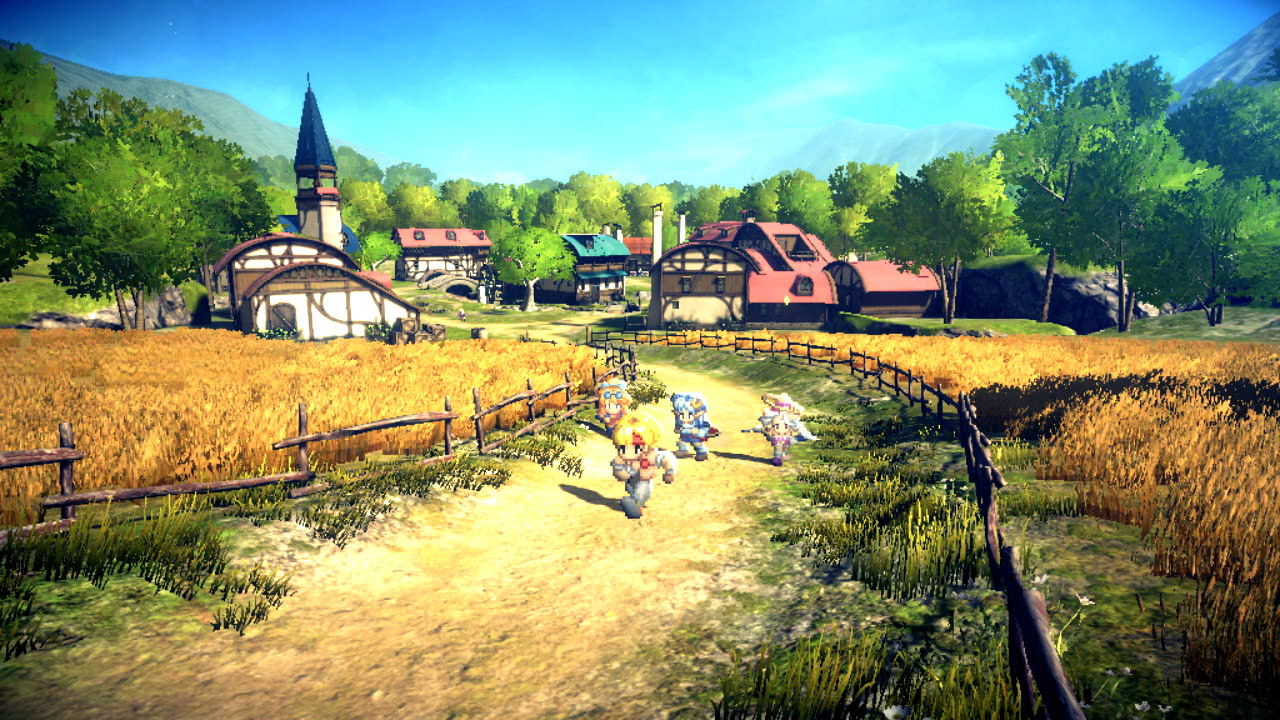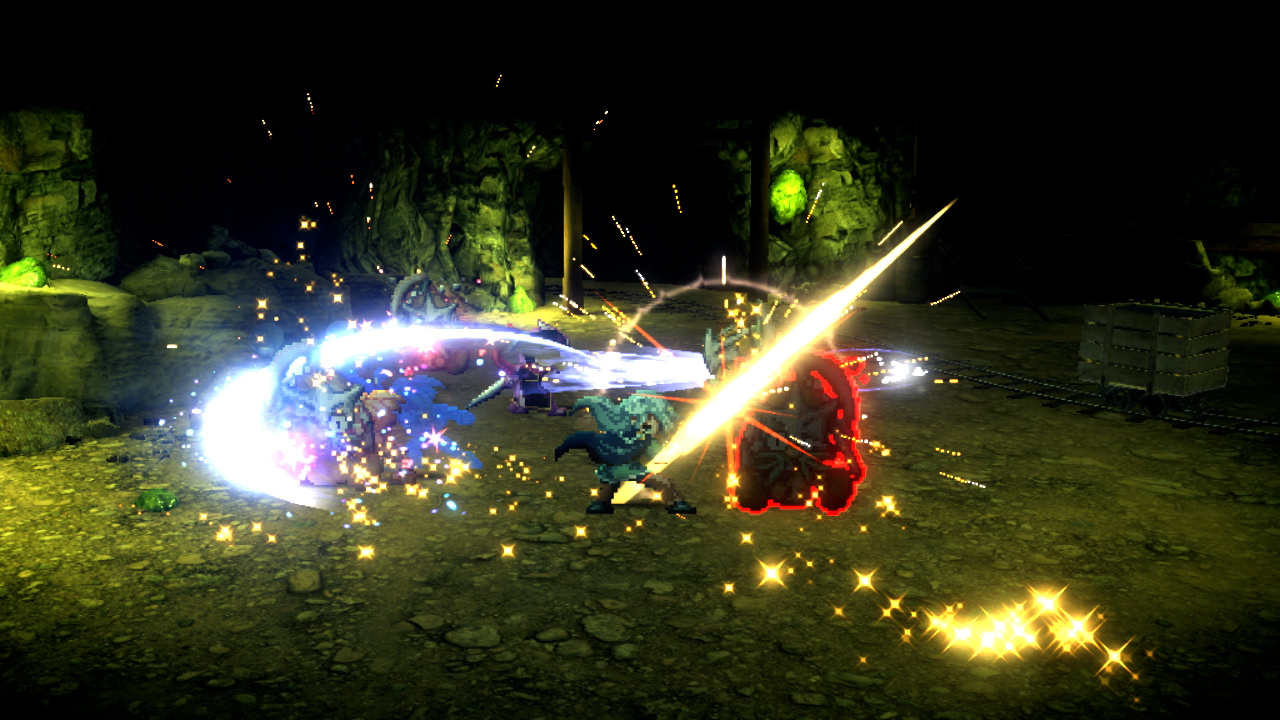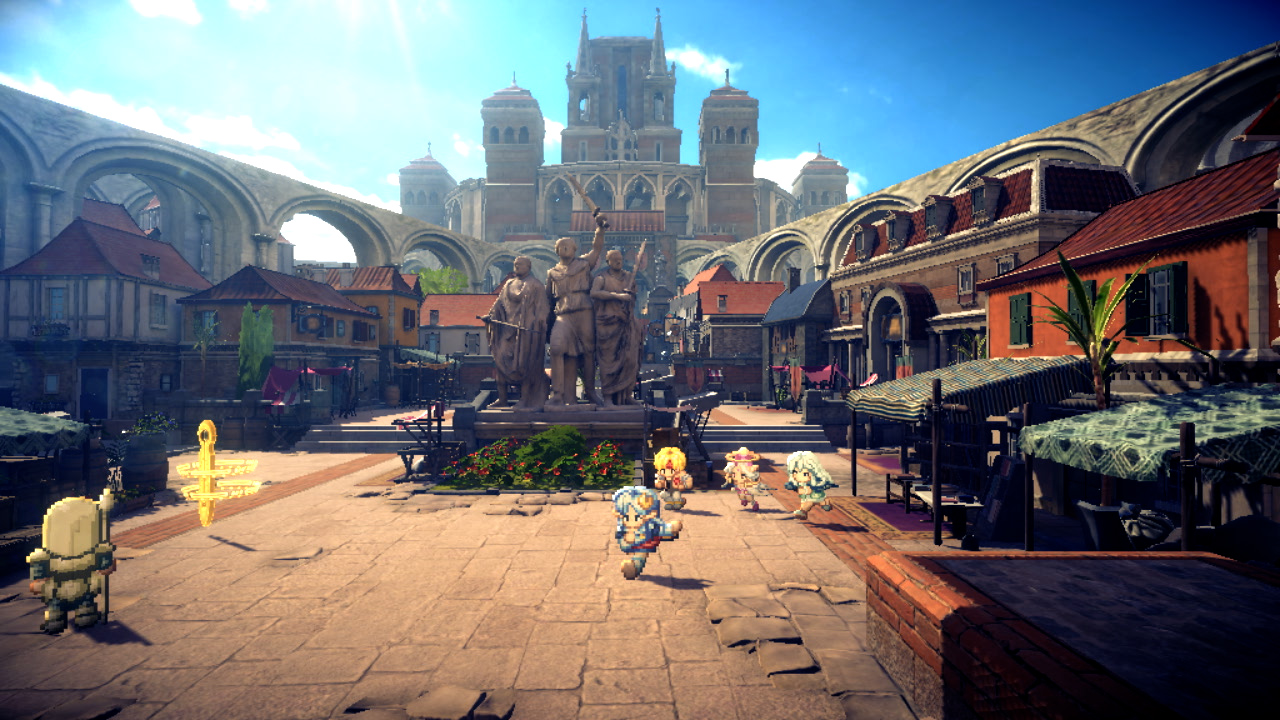System: Switch
Release date: November 2, 2023
Developer: Square Enix / Gemdrops
Publisher: Square Enix
Star Ocean has been around for a very long time, but for various reasons it has never gained the same sort of recognition or critical acclaim as Square Enix’s other long-running franchises such as Final Fantasy and Dragon Quest. A series that blends science-fiction and fantasy in a mix that might best be described as hit-or-miss across its six installments, it seems to be something that those who have heard of it either embrace wholeheartedly or tactically avoid. But the common consensus amongst fans is that Second Story is the best the series has been to date. After bringing Star Ocean: First Departure R, a port of the PSP remake of the first game, to Switch, Square Enix have now released Star Ocean: The Second Story R, a full remaster of the original game in a new engine with a host of quality-of-life improvements to make it a more modern experience. It is with great pleasure that I say that this is a resounding success, and captures the charm of the original while improving upon it in almost every way possible.
Set twenty years after the events of Star Ocean: First Departure R, Second Story R takes place mostly on Expel, an underdeveloped planet in crisis. The game features two selectable protagonists, Claude C. Kenny (a last name fans of the series will undoubtedly recognize) and Rena Lanford, a native of Expel, who meet shortly after Claude’s untimely arrival on the planet. Their initial encounter leads Rena to believe that Claude is the Hero of Light, who is destined to free the land from the monster threat brought about by the Sorcery Globe. For his part, Claude just wants to find a way home, and the two ultimately decide to travel together.
Although your choice between Claude and Rena won’t impact the story of the game in any significant fashion, and you’ll have both in your party, it will profoundly affect your perspective of events. Claude makes the game feel more like a sequel to First Departure R, given his extraterrestrial background and subsequent knowledge of the bigger picture, and he brings those science fiction elements to the immediate forefront and frames the story entirely within that context. This is almost completely absent in Rena’s storyline until much later: as a native of the planet Expel, she is unaware of the existence of advanced technology or the real nature of the threat her planet faces, and her perspective is one that initially feels more like a traditional fantasy RPG. This makes Second Story R both an excellent sequel for returning fans and starting point for newcomers, and is a fantastic blend of science fiction and fantasy that still manages to feel unique despite the game being over two decades old at this point.

The dual protagonist approach taken by the game also gives it a high level of replayability, as both Claude and Rena have their own internal dialogue, unique events when they become separated, and opportunities to recruit different party members the other lacks. This design choice will no doubt frustrate those who want to do everything in a single playthrough, but it helps to make their individual stories feel unique and worth experiencing, even though the main events are the same regardless of who you choose. Second Story R also features a large number of smaller sub-events in the form of Private Actions; small scenes between your other party members. Both Claude and Rena have their own unique Private Actions, which helps to develop your party members (who would otherwise feel quite under-developed as characters and feel largely as though they were simply along for the ride without them) and give an added level of validity to your choices. Deepening character bonds will improve their capabilities in battle and, of course, lead to character-specific endings.
Second Story R is an action RPG with real time battles, and these have been given a significant overhaul to be more interactive and action-focused. Enemies now have a number of shields over their health bars, and depleting these will cause them to enter a break state, stunning them and allowing your characters time to do significantly more damage. Pressing B at the right time will trigger a Perfect Counter, which recovers HP and MP and depletes their shield. Enemies will also drop orbs for passive bonuses depending on your battle formation, and you can call upon your reserve party members (and some cameo characters from other Star Ocean titles) to help you with single attacks.

Although the game is not particularly challenging on the default difficulty, I found combat to be extremely enjoyable, with the new mechanics introduced making the game feel like one of the more modern Star Ocean titles, which incorporated similar gameplay mechanics in their battle systems. Enemies are now represented as conveniently color-coded shadowy blobs on the overworld, and the game rewards you for chaining multiple battles together by granting additional experience points, skill points, and money. This makes building your characters and resources much easier, and also allows you to avoid battles if you’re in a hurry to see the next story sequence.
Despite these improvements, the jankier elements of combat are still a constant presence that can pull you out of the action: unless you take constant direct control, the game will often default to targeting the closest enemy, and this can result in a lot of awkward jumping if enemies are airborne, or aimless running around as everyone jockeys for position to strike. Party AI can be customized to some degree to force them to take specific actions, but on higher difficulties in particular there is a lack of competence to their movement that will see you taking a direct hand in the action more frequently than you might like to prevent a swift party wipe-out. For all the advantages that the new gameplay mechanics provide, they can also be extremely debilitating, with back attacks costing you your focus gauge and stunning you for several seconds, and the timing for perfect counters being unreasonably tight at times. It is also difficult to flee from battles, as being knocked out of the animation – over which you have no control – will require you to initiate it again. Dying in combat will give you the choice of trying again and allow you to change your party lineup and difficulty before you do so, but there is the potential for it to lead to some frustrating encounters if you’re underleveled and unable to flee in time.
Battles will reward you with points to invest in a complex web of skills, which form the backbone of your capabilities both inside and outside of combat. Skills go up to Level 10 and provide an increase to stats, and when combined with others at a certain level they allow access to Specialty Skills, which allow you to perform activities outside of battle, from item creation (sub-divided into an excessive number of different categories) to cooking and fishing. Fortunately, the game allows you to invest in multiple skills simultaneously to access Specialty Skills instantly, which I felt was a fantastic quality of life addition that allows for more efficient character building, and meant I wasn’t left struggling to remember which combination of Skills would unlock which Specialty. Skill points are not finite, and you can eventually max out everything if you’re determined enough, but initially it prevents quite an overwhelming front, and it can be difficult to know what you should prioritize in the earlier hours of the game. There is a lot to take in, and although the game offers a fairly comprehensive list of tutorials, it will largely leave you to your own devices to figure things out.

Second Story R features a host of quality of life improvements that make it the most enjoyable and accessible version of the game to date. It signposts very clearly on the world map and minimap when there is a new event or private action in a location, and whether or not it is time-limited, which makes it much easier to keep track of events and navigate the minefield of private actions that can lead to character-specific endings. To further support this, you can also now view affection levels between characters in the status screen, and can enter and exit PA Mode with a single button press, allowing you to quickly hop in and out as necessary. Fast travel is accessible at almost any time, so you can easily get back to any previously visited location or dungeon, and checkpoints are spaced out quite generously to let you more easily pinpoint the exact location you want to get to. For completionists, there are a huge number of Challenge Missions to undertake, most of which can be done naturally while playing, and an Achievements system so you can experience everything the game has to offer.
Unfortunately, the game does not tell you when and where you’ll be able to recruit optional characters to your team, and nor does it tell you what the consequences of doing this will be, which I felt was an oversight that could have used some clarification with this updated remake. Adding some party members to your team will mean you will be unable to recruit others later in the story (although there is no story-specific reason for this in most cases) and although returning players will be aware of the intricacies here, as you need to go out of your way to encounter most of these characters, newcomers could end up missing out on them entirely, which is unfortunate, as through Private Actions they can result in a lot of character development for both Claude and Rena, and can provide a valuable advantage in combat.

Visually, Second Story R is absolutely stunning, with an entirely new visual style and engine that isn’t quite the HD-2D style that Square Enix have been adopting for sprite-based titles in recent years, but works extremely well nonetheless. Although the character sprites can look slightly odd at times in the more textured environments, particularly on a TV screen, everything is rendered with a high level of detail, with fantastic lighting effects lending a real depth to backgrounds that I felt was consistently impressive. The game runs smoothly on Switch with no noticeable frame dips even during the most hectic moments of combat, and the cinematic camera angles help keep a focus on your character at all times, only zooming out for dramatic effect when a special move is unleashed, with a dramatic pause as the devastation (usually a spell) affects the entire battlefield in a spectacular explosion. The game also features stunning new animated portraits, but with the option to swap to the portraits from the PSP version or the original version if you would prefer.
The soundtrack for Second Story R was composed by Motoi Sakuraba, famous for his work on the Tales series in particular, and his work here is exemplary with the remastered orchestral pieces providing an added level of depth to the atmosphere of each area that the original couldn’t quite capture – although the original soundtrack has also been included, and can be changed to in the settings at any point if that is your preference. The game also features full English and Japanese voice acting, with the majority of major story scenes and private actions being fully voiced, and in my opinion this has aged quite gracefully in most instances, with both Claude and Rena having consistently strong performances throughout. Although some characters may miss the mark, as the majority of your party members are optional, this is a minor inconvenience at most if you happen to find that a character you can recruit has a voice you’re not particularly fond of.
The Verdict

Star Ocean: The Second Story R is an absolutely fantastic re-imagining of what is arguably the best installment in one of Square Enix’s most overlooked franchises, and the quality of life improvements made to its combat in particular making it feel just as good to play as any modern action RPG with more advanced systems. It blurs the line between fantasy and science fiction in a way that remains as captivating now as it was when it was first released, and its unique presentation is easily on-par with any of Square Enix’s HD-2D titles, and feels right at home in handheld mode on the Switch. I would wholeheartedly recommend giving the demo a try if you’re on the fence, with the only caveat being that this will require two lengthy playthroughs with each protagonist, as well as some planning, to experience it all. But it will be a truly unforgettable experience from start to finish.
Star Ocean: The Second Story R copy provided by the publisher for the purposes of this review.